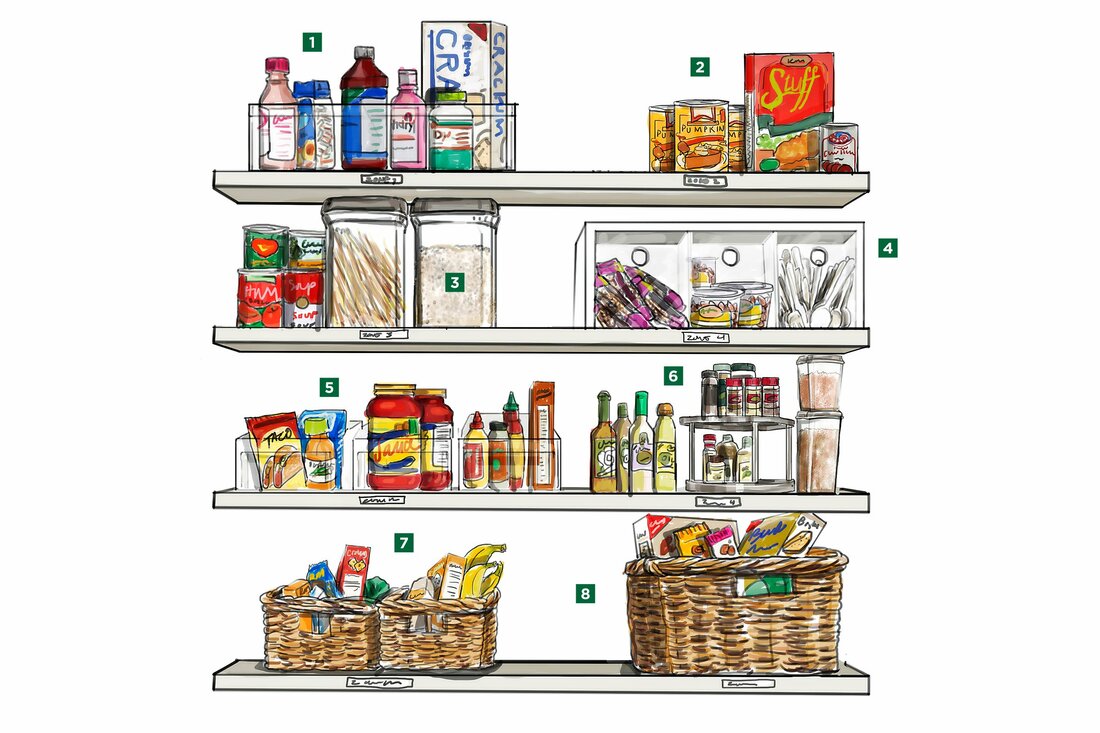For decades, the Church of Jesus Christ of Latter-day Saints has counseled its members to have at least a year’s supply of food on hand. That is still the counsel.
Our modern eating and cooking habits, though, have made it necessary to adjust that storage. The year-supply, long-term storage foods are ones that require cooking skills and time that many people don’t take. There are many reasons that food storage is a lifesaver—loss of employment, long-term illness, bills that eat up more of the budget than they normally do, natural disasters, and economic upheaval— but if your body is not used to eating whole wheat and beans every day, switching your diet suddenly is a recipe for another hospital stay. It can even be deadly. Having 3 months of foods you are used to eating provides a buffer for your time, your diet, and your skill level. Most family emergencies are over within 3 months. If yours isn’t, though, that 3 months buys you time to start gradually working the long-term storage foods into your diet, so your body adjusts to them. And it gives you time to try out new food storage recipes a little at a time.
The current counsel from our church leaders is to have a three-month supply of foods we normally eat, AND a year’s supply of long-term basic foods.
How much will this cost? Will it be as much as my monthly food budget times three?
Most likely, it will not even be close. To buy your complete three month supply within six months, using the strategies and habits I’ll share next week, will cost around $2/day per person, or $14/person/week. That may be less than you pay for cell phone service, to say nothing of the cost for the phone itself.
My experience has been that because of the way you ideally shop for this short-term storage, it costs considerably less than your regular-meals budget. Can you afford it? The way I see it, I can’t afford NOT to have a family storehouse. Most of my shelf-stable grocery items are purchased when each is on sale, usually at 30-70% off the regular price.
How often does this food need rotated? Do I store it and forget it?
That depends largely on what kind of food you get. Lettuce and cucumbers won't last.
One good storage method has you rotate food once a year, putting the soonest-to-expire shelf-stable foods in your pantry. Another method—the way I do it—is to treat it as your personal, well-stocked storehouse. Buy on sale, use what you purchased on sale. That frees up even more of your budget to get food storage! Freeze-dried, dehydrated, and dry-pack foods can be stored and left alone for a long time.
Don’t my regular foods have too short of a shelf life to store this long?
Again, that depends mostly on what they are and how you store them. The enemies of food are light, heat, water, oxygen, and pests (mostly insects and rodents). Many fruits and vegetables can store for months at a time in the right temperature and humidity. There are canned versions of most of them. And you can store vegetable seeds as backup for next year’s food. Well-packaged frozen foods can stay good for a year or more. (The biggest risk is freezer burn, but the food is still usable, especially when added to soups.)
What about those dates on boxed and canned food?
The date on the box or can is NOT the date by which the food will spoil; it’s an arbitrary date the manufacturer stamped on it for purposes of guaranteeing its quality. Boxed and bagged food-- including breakfast cereal-- when stored properly, can easily last 2-3 years before developing off-flavors. (High-fat foods can get rancid before then; it won't hurt you, but doesn't taste good!)
Are canned foods safe after their 'best by' date?
While canned foods do eventually lose some of their vitamins and texture, they remain safe and able to sustain life as long as the seal is intact. I know of at least two accounts of separate ships that sank with canned food aboard. More than 100 years later, the boats were found, the cans brought up and cleaned off. Some of the cans were opened and tested; the food was safe and still contained the protein and minerals.
Here is a statement directly from the Canned Food Alliance--
“Canning is one of the safest ways to preserve foods. To retain peak quality, the shelf life of canned food is at least two years… The food maintains its high eating quality for more than two years and is safe to eat as long as the container is not damaged in any way.”
If a can is damaged, bulging, or weeping, the seal may have been broken. Toss it out. The exception to this is tomato products; if they bulge slightly or spurt when you open it, this is not from microbial growth, but from electrolysis between the acidic tomato and the metal can. It forms gas as a by-product.
And the biggest question--
How do I know how much to store??
That question gets its own blog post.
What questions do you still have? Ask in the comments below, and your question may get added to the FAQs.

 RSS Feed
RSS Feed